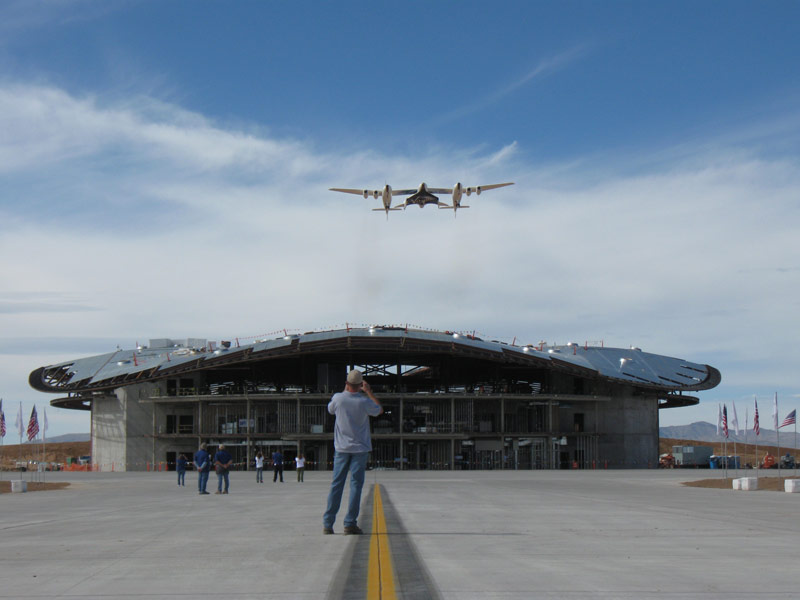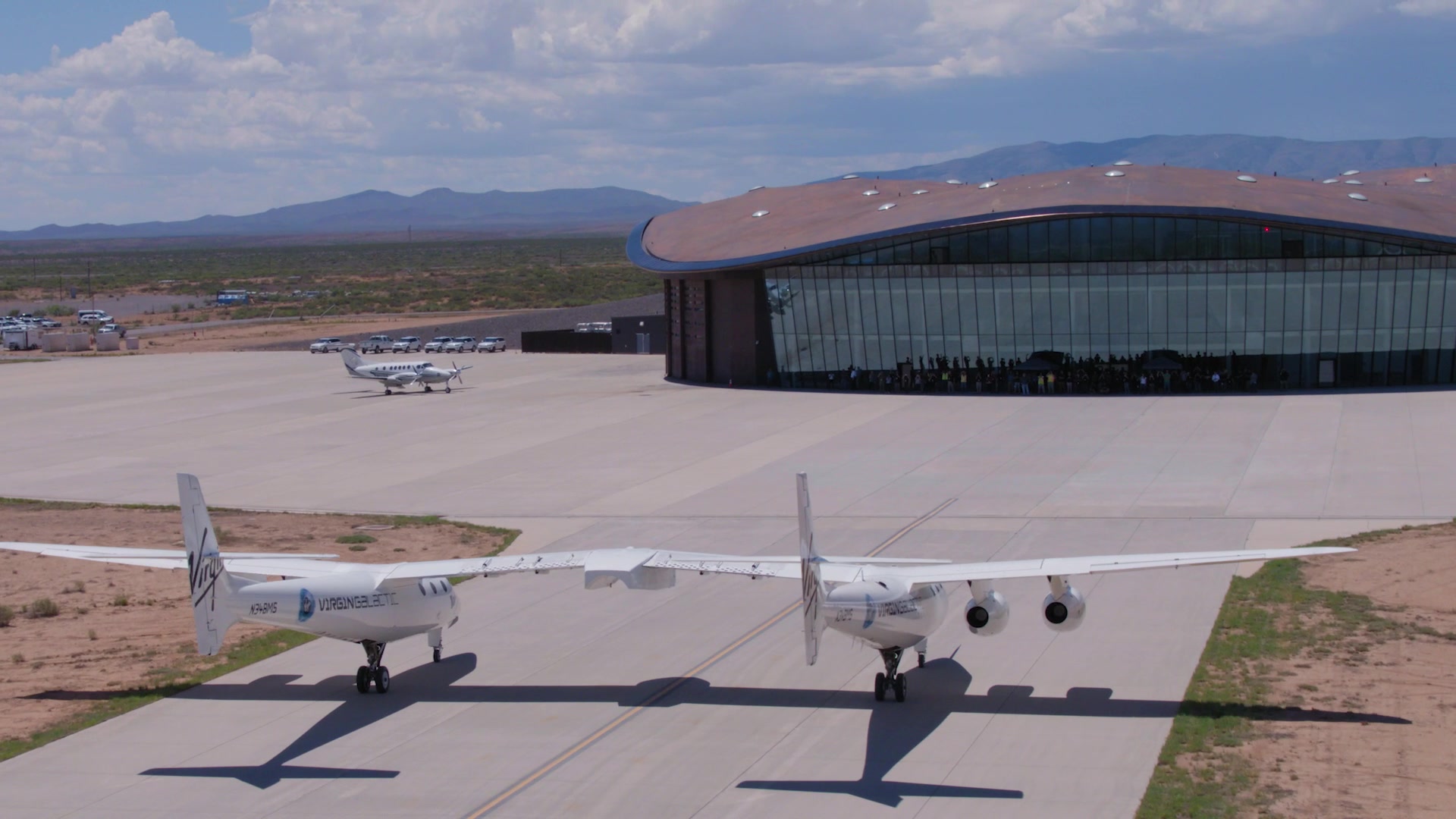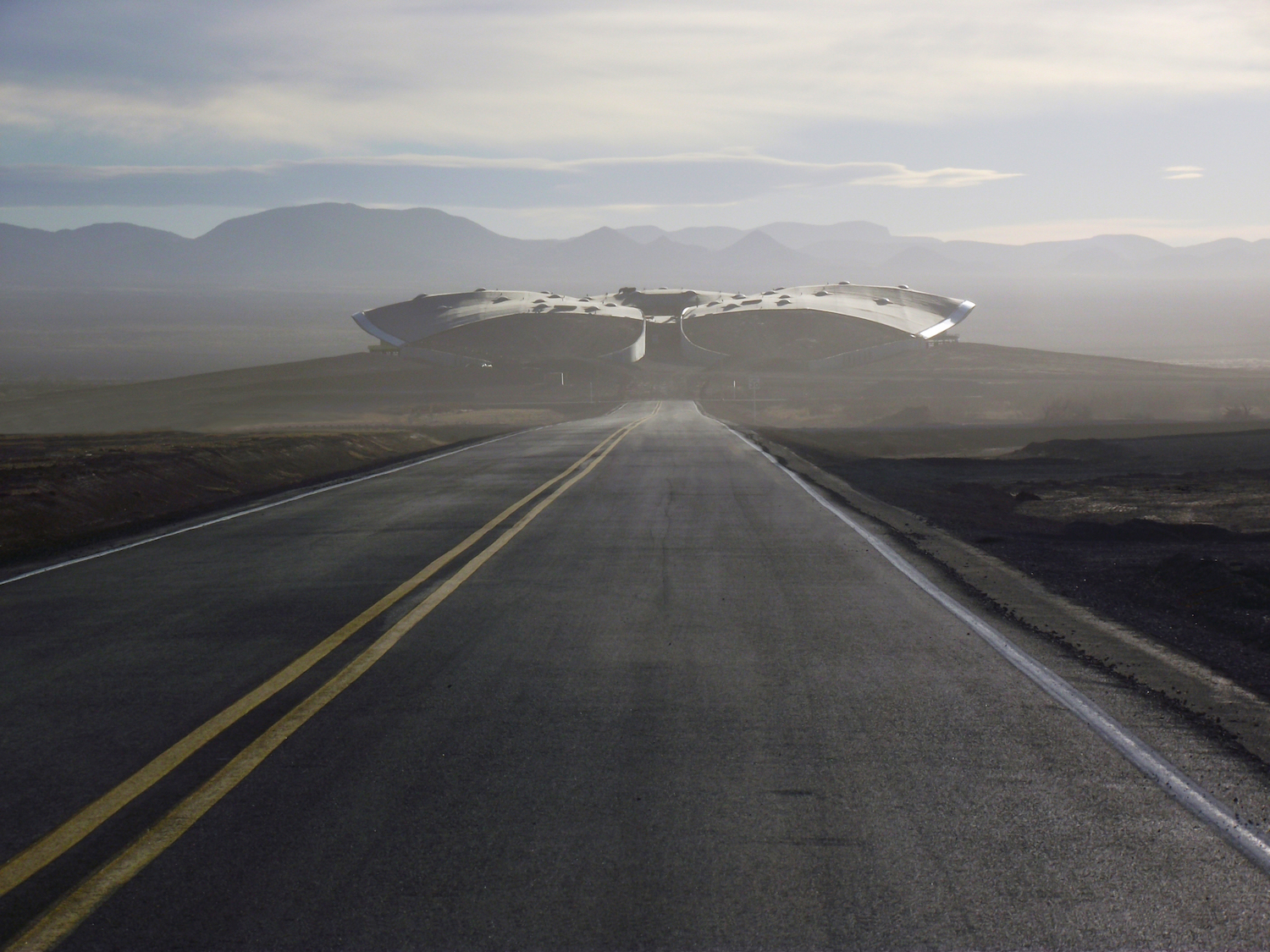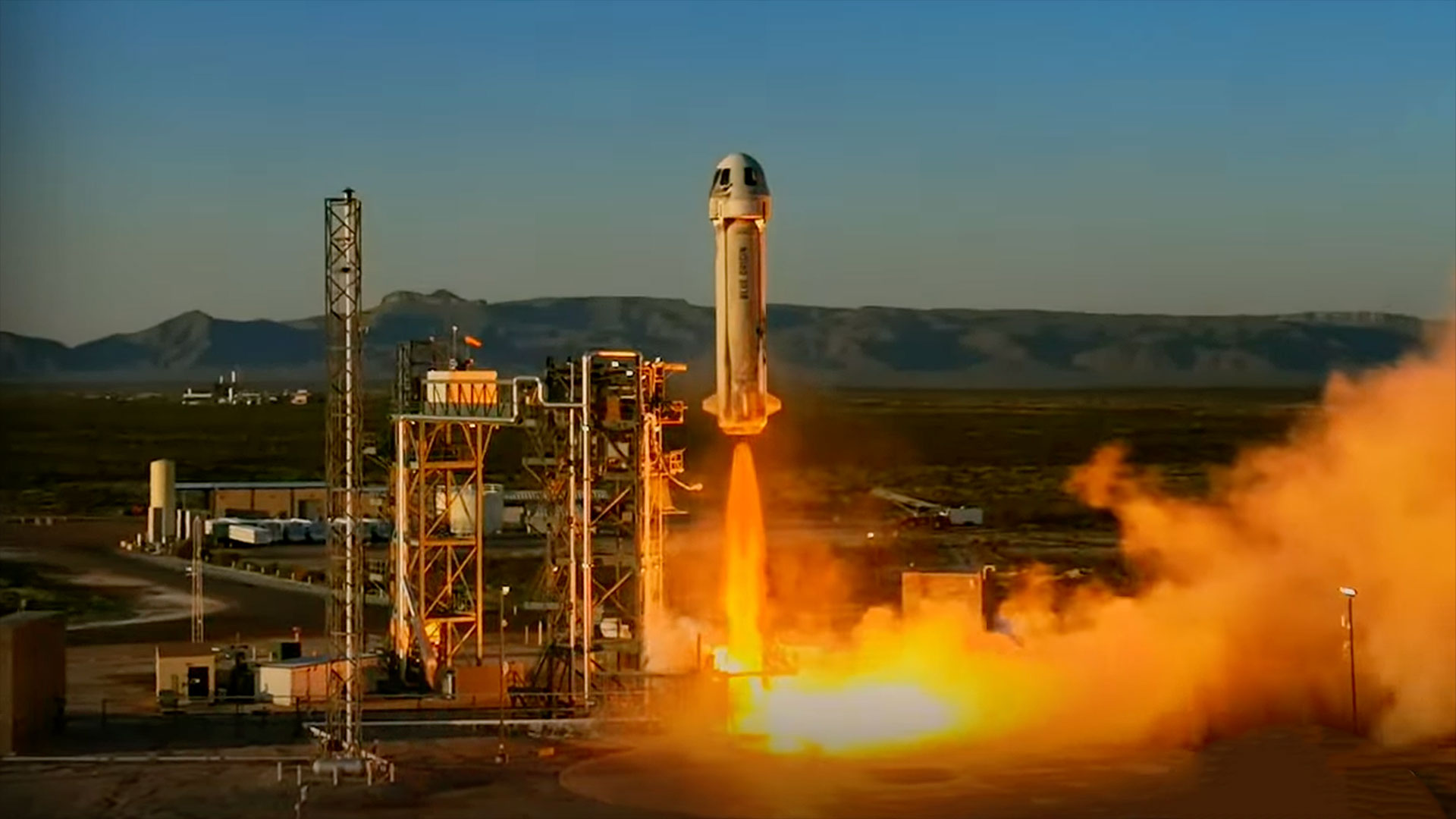Spaceport America: Space Tourism Launch Site

Spaceport America is a launching facility for numerous private space companies. The facility is widely considered the first spaceport dedicated to commercial spaceflight.
The spaceport broke ground in 2006 in New Mexico and was substantially complete around 2012. On Aug. 15, 2019, private space tourism company Virgin Galactic revealed their completed "Gateway to Space" building at the Spaceport complex.
Virgin Galactic is considered the anchor tenant of Spaceport America; public money contributed at least $209 million to attract Virgin founder Richard Branson and others to establish facilities there. The company's Gateway to Space building is where spaceship passengers will prepare for flight into space and where mission control will manage spaceflight operations.
Why New Mexico?
The age of space tourism officially launched when SpaceShipOne — financed jointly by Scaled Composites and Microsoft co-founder Paul Allen — successfully flew into space twice in 2004.
By making the trip, SpaceShipOne secured the Ansari X-Prize and $10 million. Its technology impressed Branson, who announced in 2004 that Virgin would fund the development of a successor spacecraft called SpaceShipTwo.
The X-Prize also spurred interest in Spaceport America. In 2004, New Mexico won a bid to host the X-Prize Cup, which was intended to be an exhibition to showcase the technologies available for space tourism. The first event occurred in October 2005, drawing 20,000 people to Las Cruces.
Two months later, Branson and then-New Mexico governor Bill Richardson announced a deal to bring the Virgin headquarters to the state. The state would build a facility to host several companies, but Virgin would be the chief tenant.
Breaking space news, the latest updates on rocket launches, skywatching events and more!
"We're going where no one has gone before. There's no model to follow, nothing to copy. That is what makes this so exciting," Branson said at the announcement that December. "We might even be able to allow those aliens who landed at Roswell 50 years ago in a UFO a chance to go home."
At the time, officials estimated that construction would begin as early as 2007, with the facility opening in 2009 or 2010 for business. Virgin also planned to fly its first commercial spaceflight by the end of the decade.
However, both sides experienced development delays that pushed back their estimates by several years. Reported issues affecting Spaceport America included environmental assessment findings and problems with the design of the headquarters interior.

Building the facility
Spaceport America is fairly isolated from large population centers, with the largest nearby city being Las Cruces — 55 miles away. Government officials spent several months negotiating with landowners for the space that the facility would require to run commercial spaceflights.
On Dec. 11, 2006, an agreement was brokered allowing for 18,000 acres of state trust land. Participants in the pact included the New Mexico Spaceport Authority, the State Land Office, Sierra County and two ranch owners.
Design concepts for the spaceport rolled out in 2007 as two counties agreed to contribute tax money for the construction. Then in 2008, Virgin signed a 20-year lease agreement with the state of New Mexico to put its headquarters and operations at Spaceport America.
Although some flights were already running from launch pads, the official groundbreaking of the facility didn't take place until 2009. Virgin's "Eve" carrier spacecraft — designed to hoist the first SpaceShipTwo above the ground for suborbital runs — made a flypast during the ceremony.
But officials emphasized that they were not relying on Virgin to make their money. Small satellites for military and research purposes were some of the other client types sought.
"We can't have a spaceport that just has a one-sided mission. Because if that mission has a hiccup, then we and this investment are going to have a very bad day," said Steve Landeene, then-executive director of the New Mexico Spaceport Authority, in 2009. "The key is a diverse portfolio."

Waiting for business
In 2014, Virgin Galactic experienced a fatal test flight that killed one pilot and also pushed back its plans again for a commercial spaceflight.
In December, the Wall Street Journal wrote that the spaceport still is "largely vacant, with little benefit to surrounding communities" -- and locals were worrying about the future given the crash. At the time, spaceport officials said they were looking for other tenants to complement Virgin (SpaceX is also a tenant.)
In early 2015, a bill moved by New Mexico Senator George K. Muñoz suggested selling Spaceport America, citing problems with waiting for operations to begin. The bill was stranded in finance committee in March 2015, with officials saying there wasn't a lot of widespread support for the idea.
"There was a lot of hoopla before that if 'we build it … they will come,' but it has been several years now and nobody's shown up yet," Muñoz said in a debate cited on Space.com. "New Mexican taxpayers are continuing to foot the bill for a $250 million empty facility that is providing the Legislature shaky operational information at best."
The spaceport also generates money through space work (such as an UP Aerospace launch in mid-2016) and tourism-related activities: "we also host special events, photo-shoots, filming and air-related activities," the facility says on its website. Anderson also emphasizes that the facility is a "long-term investment" that will require help from the state legislature, although Virgin remains committed to the facility.

Virgin Galactic's Gateway to Space
Virgin Galactic is well into the test-flight program with its current spaceflight system WhiteKnightTwo and SpaceShipTwo, which are known as VMS Eve and VSS Unity, respectively. Unity reached suborbital space for the first time in December 2018 and did it again in February 2019, earning five people — pilots Mark "Forger" Stucky, CJ Sturckow, Dave Mackay and Mike "Sooch" Masucci, and chief astronaut instructor Beth Moses — their commercial astronaut wings.
Those landmark flights, and the others leading up to them, took off from Mojave Air and Space Port in southeastern California. But the final phases of the test campaign will be carried out at Spaceport America later this year.
"Following the completion of [the testing] program, we will move to the start of commercial service and begin flying our future astronauts into space," Mackay, Virgin Galactic's chief pilot, wrote in a blog post on Aug. 15, 2019.
Those commercial services will operate out of the new Gateway to Space building.
Virgin Galactic showcased two of the building's three floors in August 2019 during a media event. The first floor, called Gaia, is the Gateway's social center; it features a coffee bar and other spaces where members of the spaceflight team can interact with passengers and their families.
Gaia's color scheme is meant to complement and evoke the Chihuahuan Desert landscape that surrounds Spaceport America, Virgin Galactic representatives said.
"The Earth-focused design will provide a fitting welcome to those newly graduated astronauts returning from space with a new appreciation and understanding of our home planet," they wrote in the same statement.
The second floor, named Cirrus, is decorated in shades of gray and white, representing flight and the sky. Cirrus is the spaceflight-operations hub; it's home to mission control, the mission briefing room and the pilot corps, Virgin Galactic representatives said.
The Gateway to Space also houses a hangar in its center, which VMS Eve just started calling home. This space is huge — big enough to accommodate two WhiteKnightTwo vehicles (which have wingspans of 140 feet, or 43 meters) and five SpaceShipTwos, Virgin Galactic representatives said.
Additional resources:
- Learn more at Virgin Galactic's official webpage.
- Interested in purchasing a ticket to space? Put your name on the waiting list.
- Watch: Richard Branson's update on SpaceShipTwo test flights.
This article was updated on Aug. 15, 2019 by Space.com Senior Space Writer Mike Wall and Reference Editor Kimberly Hickok.

Elizabeth Howell (she/her), Ph.D., was a staff writer in the spaceflight channel between 2022 and 2024 specializing in Canadian space news. She was contributing writer for Space.com for 10 years from 2012 to 2024. Elizabeth's reporting includes multiple exclusives with the White House, leading world coverage about a lost-and-found space tomato on the International Space Station, witnessing five human spaceflight launches on two continents, flying parabolic, working inside a spacesuit, and participating in a simulated Mars mission. Her latest book, "Why Am I Taller?" (ECW Press, 2022) is co-written with astronaut Dave Williams.
